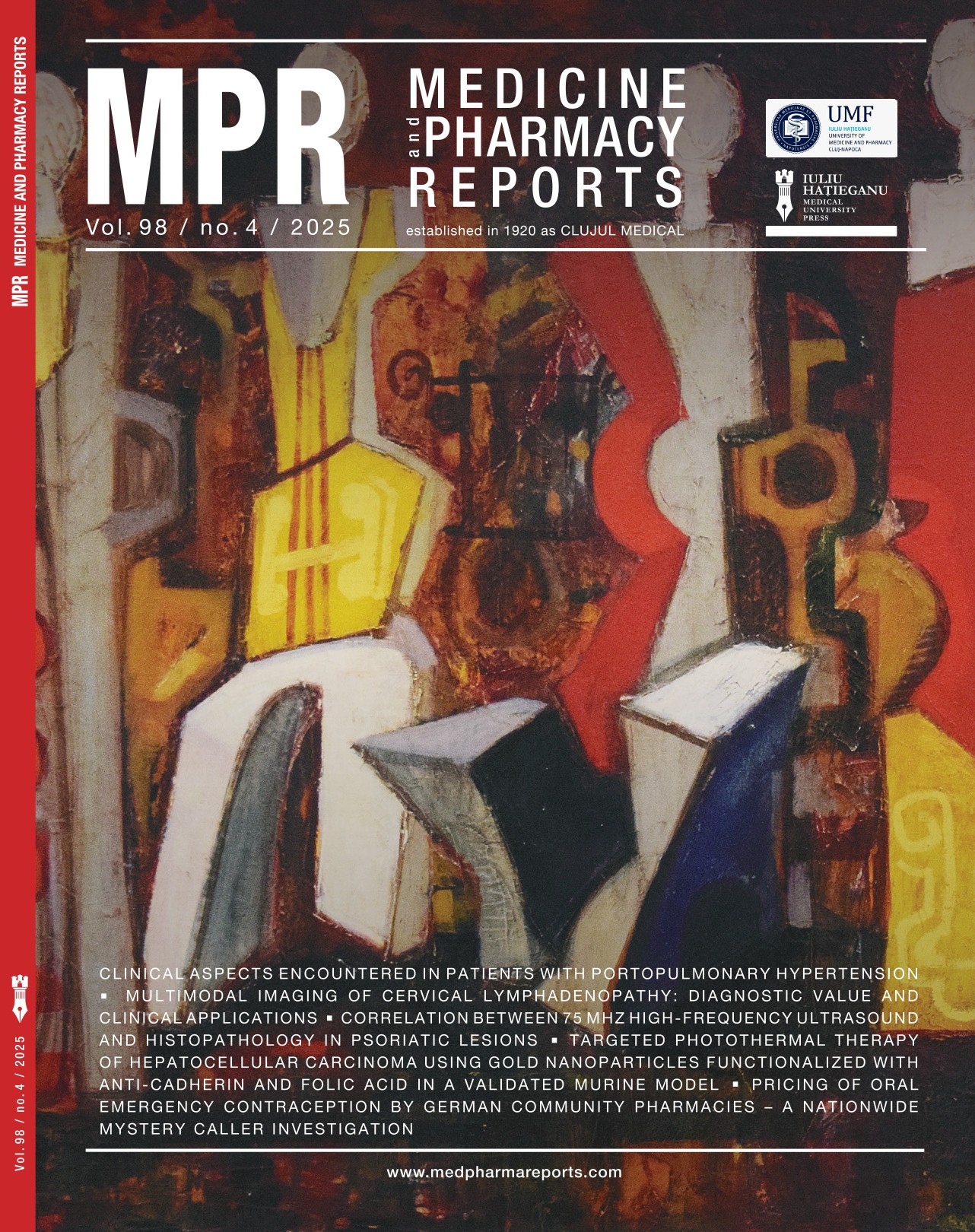Associations between fetal biometric parameters and maternal characteristics in the prenatal screening phase for aneuploidies
DOI:
https://doi.org/10.15386/mpr-2933Keywords:
trisomy 21, trisomy 18, trisomy 13, monosomy x, prenatal screening, fetal biometryAbstract
Background and Aim. Aneuploidies are rare diseases with great impact on an individual’s life, as well as on their families, the reason why prenatal screening is performed, allowing families to take an informed decision. Initial prenatal screening includes the double test, triple test, non-invasive prenatal testing and ultrasonography. Among these, ultrasonography plays an important role giving information regarding an elevated risk for aneuploidies.
Methods. Eighty-four pregnant women who underwent prenatal screening were included in this study, of whom 9 cases were diagnosed with an aneuploidy. A statistical analysis was performed to identify possible associations between morpho-fetal characteristics, estimated fetal growth, and other parameters, such as maternal characteristics or gestational age.
Results. As expected, based on the data available in the literature, an advanced maternal age was observed in the high-risk group, compared to the low-risk one (the risk was evaluated after the initial screening and influenced the decision of a further amniocentesis). A good correlation was observed in this study between the fetal biometric parameters and gestational age, as well as between fetal biometric parameters and maternal weight gain in healthy pregnancies, while low or no correlations were found in the aneuploid pregnancies.
Conclusions. The results of our study highlight the importance of ultrasonography evaluation and reveal possible correlations of fetal parameters with maternal characteristics. These findings, together with already well-established parameters, might suggest stronger clusters of soft markers and bring supplementary information regarding the risk level of pregnancy, in order to perform a better assessment of cases where invasive diagnosis is required.
Downloads
Published
How to Cite
Issue
Section
License
Copyright (c) 2025 Răzvan Lucian Jurca, Ioana Gheorghiu, Iulia Rus, Vlad Ormindean, Florin Stamatian
The authors are required to transfer the copyright of the published paper to the journal. This is done by agreeing to sign the Copyright Assignment Form. Whenever the case, authors are also required to send permissions to reproduce material (such as illustrations) from the copyright holder.

The papers published in the journal are licensed under a Creative Commons Attribution-NonCommercial-NoDerivatives 4.0 International License.

